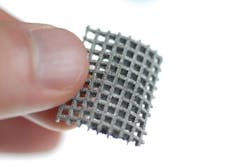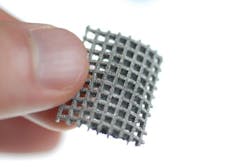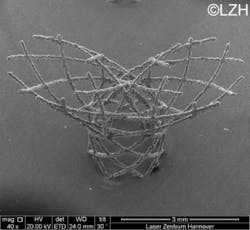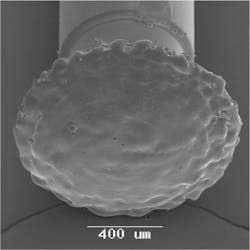Selective laser melting method can 3D-print medical implants
Scientists at Laser Zentrum Hannover e.V. (LZH) in Germany have established a highly automated selective laser melting process to produce or coat implants made of platinum, nickel-titanium (NiTi), or stainless steel. Whether for individual micro-implants or for micro-implants with medicine depots, additive manufacturing is ideally suited for manufacturing such components.
Related: Femtosecond laser processing of metal and plastics in the medical device industry
For this, scientists in the Surface Technology Group at LZH used a special form of 3D printing called selective laser micro-melting (SLµM), which enabled them to coat electrodes for pacemakers with platinum, and produce 3D lattice structures made of NiTi and stent prototypes made of stainless steel.
One way to lengthen the life of pacemakers is to intelligently adapt the form and surface of the electrodes. Platinum has excellent electrical conductivity characteristics, and it is bioinert. However, the metal has casting limitations, and it is hard to be worked on in the micro-range using conventional methods. In the framework of the project, the scientists developed an SLµM process for a platinum-iridium-alloy, and successfully coated implants.
The shape memory alloy NiTi is already widely used in medical technology. Micro-implants made of NiTi offer new possibilities for making tailor-made stents, or bone replacements for patients. The LZH scientists have been able to manufacture highly complex, 3D component structures made of NiTi. A resolution of up to 90µm has already been reached for components, retaining all of the characteristics of the shape memory alloy.
Using 316 L stainless steel for SLµM processes has already been established. Within the project, stent structures with a closed cell design have been developed and produced. Their mechanical characteristics are similar to those of conventional stents.
The project was carried out together with the Institute for Biomedical Technology of the University of Rostock in Germany as a subproject in the cooperative project REMEDIS, which was supported by the German Federal Ministry for Education and Research (BMBF).
For more information, please visit www.lzh.de.



